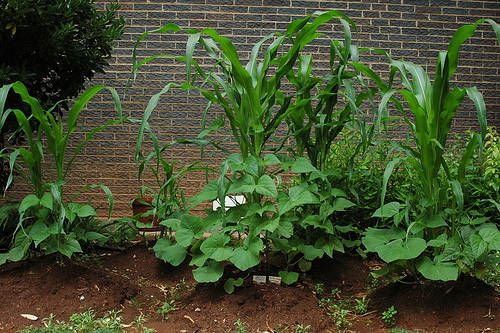Pumpkin History: The Three Sisters
Pumpkin is a kind of squash. A kind of winter squash to be more exact, and it grows an odd fruit — a berry called a pepo that has a very thick outer wall. That wall, once it’s had a chance to dry out a little, will keep the contents of the fruit fresh for months.
The Pilgrims were quick to seize on that particular feature. Indeed if it weren’t for winter squashes like the pumpkin, early American colonists wouldn’t have made it through their first winter. It was of course the Native Americans who taught the Pilgrims how to cultivate winter squash. They’d already had about 10,000 years of experience by the time the Pilgrims showed up.
Classically, winter squashes were grown using the “three sisters” method, an ingenious technique by which corn, beans and squash were all grown together in a series of small mounds. The corn stalk would shoot up first, creating a sort of natural trellis that the beans would grow up and onto, thus increasing their yield. For their part, the beans added critical nitrogen to the soil. Squash, which grows low, played defense on the team. The broad leaves denied sunlight to growing weeds, and the (frequently) spiky stems discouraged predation. All the shade also helped hold moisture in. The whole thing looked like this:

Pretty cool. A nifty thing about squash is that just about everything on the plant is edible — leaves, vines, flowers and seeds — making it a very handy plant for your average New Worlder. Or Old Worlder for that matter, though in Europe pumpkins were mostly grown for use as animal feed. Oh, the many splendors they missed.
This Three Sisters technique is good, old-fashioned resourcefulness and simple science. I wish more agriculture was practiced with this in mind!
I think it would be fun to try it sometime in our garden. Repeat a bit of agricultural history…right up my alley!
– Joe